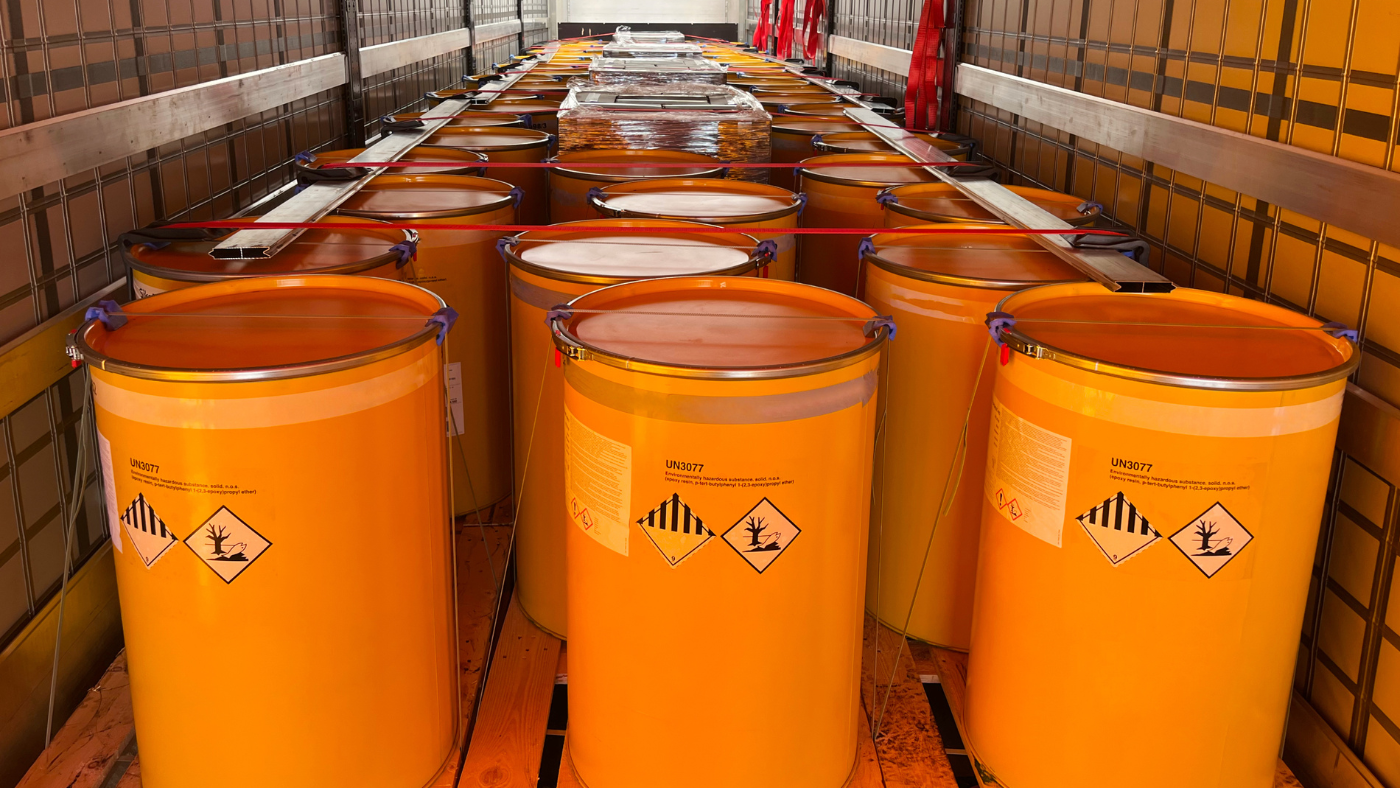What is hazardous waste?
The United States Department of Transportation (U.S. DOT) defines hazardous waste as any
- biological agent or toxin;
- radioactive or radiological material that emits ionizing radiation; or
- solid, liquid, or gaseous material that is toxic, explosive, flammable or corrosive
that could adversely affect the health and safety of the public or harm the environment.
This post explains
- The federal regulations regarding hazardous material transportation
- Documentation requirements
- Shipper and transporter roles and requirements
- What is required in the event of a spill
Federal Hazmat Law and Federal Hazardous Materials Regulations (HMR)
Hazardous waste transportation is regulated under the federal hazardous materials transportation law, 49 U.S.C. 5101. It is the basic statute regulating hazardous materials transportation in the U.S. Hazardous material regulations (HMRs) cover the following areas: registration, classification, communication, training and security, packaging requirements and operation rules.
HMRs apply to the transportation of hazardous materials (HM) in interstate, intrastate and foreign commerce by aircraft, railcar, marine vessel and motor vehicle. HMRs apply to persons or companies who transport hazardous materials or offer hazardous materials for transportation in commerce. Additionally, these regulations apply to companies that design, manufacture, fabricate, inspect, maintain, recondition, repair or test packaging components that are qualified for use in transporting HM. Companies that prepare or accept hazardous materials for transportation are responsible for the safe transport of hazardous materials and are required to certify compliance with any requirement under the Federal hazmat law.
Hazardous Materials Transportation Require a License to Carry
HM transporters must obtain an EPA Identification number, which will be assigned to the company as a whole, not to the individual waste transporter. For HM transported on roads, each load must have a waste manifest from the time it leaves the generator facility to the off-site waste management facility. For water and rail shipments, the waste manifest is not required to accompany the shipment; instead alternative shipping documents trace the transport from departure to arrival.
Small quantity generators (SQG) are exempt from manifest requirements if they are handling or generating certain recycled or reclaimed waste. These entities must adhere to specific rules outlined in the HMRs, including that the transporter must:
- be the recycling or reclamation facility,
- keep a record of the shipping date and the name, address and EPA ID of the SQG and
- carry the logging paper with the waste.
Hazardous Materials Shipper and Transporter Responsibilities
Listed below are the major responsibilities of HM shippers. Identification of a hazardous material is the first step, and frequently the most difficult. Of all the shippers’ responsibilities, the requirement to classify hazardous material properly is very important, as it is from the proper identification that the requirements listed below are based.
Determine if a material meets the definition of HM
- Shipping Papers
- Proper shipping name
- Emergency information
- Class/division
- Emergency response number
- Hazard warning label
- Packaging
- Marking
- Employee training
- Certification
- Compatibility
- Blocking and bracing
- Placarding
- Security plan
- Incident reporting
Carrier and shipper responsibilities frequently overlap. When a motor carrier performs a shipper function, the carrier is responsible for performing that function in accordance with 49 CFR. The cargo space of the vehicle should be suitable for the material being shipped. The vehicle itself must be in sound mechanical condition. The carrier must check to ensure that the material offered by the shipper is properly described and packaged. In addition to the provisions of 49 CFR Parts 100-180, interstate motor carriers of placarded loads must comply with the hazardous materials requirements in 49 CFR Part 397.
Transporters may need to hold waste temporarily at a transfer facility. A transfer facility is defined as any transportation-related facility, such as loading docks, parking areas, storage areas and other similar areas where shipments are temporarily held. A hazardous waste transporter may hold waste without a storage permit in containers at a transfer facility for ten (10) days or less as long as the waste is manifested and kept in U.S. DOT specified containers. Storage in stationary containers is prohibited unless the transfer facility has a Resource Conservation and Recovery Act (RCRA) permit or interim status. If a transporter stores waste in containers at a transfer facility for more than 10 days, the transfer facility becomes a storage facility subject to all applicable requirements for treatment, storage and disposal facilities.
What to Know If Something Goes Wrong
If a transporter discharges or spills hazardous waste, they are required to take appropriate, immediate action to protect human health and the environment such as notifying local authorities or diking the discharge area. Additionally:
- If immediate removal of the waste is necessary to protect human health or the environment, then a federal, state or local official may authorize the removal of the waste by transporters who do not have EPA identification numbers and without the preparation of a manifest.
- U.S. DOT may require a written report about the incident outlined in 49 CFR section 171.16.
- When a serious accident or spill occurs, the transporter must notify the National Response Center (NRC) by phone as required by U.S. DOT or Superfund regulations.
- A transporter must clean up a hazardous waste discharge so that the hazardous waste discharge no longer presents a hazard to human health or the environment.
- A transporter who has discharged any quantity of hazardous waste during transportation (including loading, unloading, and temporary storage) must provide a written report to U.S. DOT within 30 days as required by 49 CFR 171.16. States may have similar requirements and usually transporters must submit duplicate copies of the report to their state transportation or environmental agencies within that timeframe.
A transporter who has discharged any quantity of hazardous waste during transportation (including loading, unloading, and temporary storage) must provide a written report to U.S. DOT within 30 days as required by 49 CFR 171.16. States may have similar requirements and usually transporters must submit duplicate copies of the report to their state transportation or environmental agencies within that timeframe.
For more information on safe and compliant hazardous waste transport, please contact Joshua Stewart, LSRP, Senior Project Manager, or reach out to us at +1.888.298.5162 or submit an inquiry.




